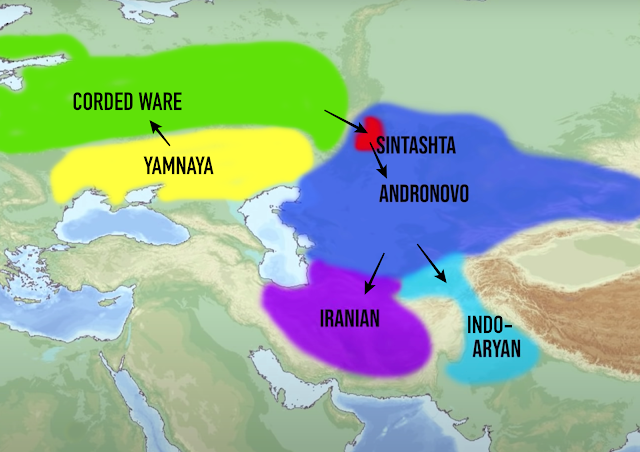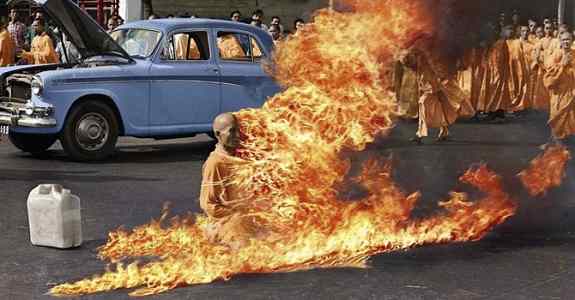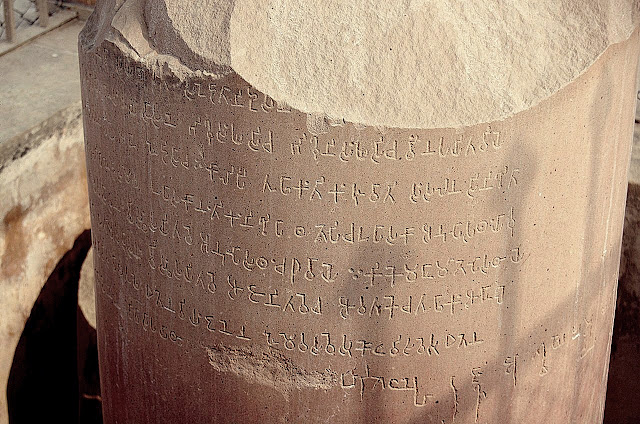Who Were, and Are, the REAL Aryans?
It is indeed a desirable thing to be well-descended, but the glory belongs to our ancestors. —Plutarch
Some men by ancestry are only the shadow of a mighty name. —Lucan
There is a lot of talk about Aryans, not only among white supremacists, white nationalists, and white people in general who are interested in their own ancestry, but also among Buddhists. Most of you probably already know that Arya (in the Pali language Ariya) was originally an ethnicity before it evolved into a name for advanced Buddhist sages; but the term Arya used for all Indo-Europeans is considered not to be technically accurate. White supremacists and others in modern Europe used the term “Aryan” as a term of convenience to represent all Indo-Europeans, but there is no evidence that most early Indo-Europeans, especially those in the west, called themselves by that name. This essay will attempt to explain who the literal, real Aryans were before the term was adopted by Buddhists and German National Socialists. First I suppose I should discuss briefly the predecessors of the literal Aryans in order to illustrate their origins.
The Indo-European ethnicity as a whole apparently arose on the Pontic/Caspian steppe, in what is now southern Ukraine and southwestern Russia, north of the Black Sea, Caucasus Mountains, and Caspian Sea. (This may inspire some indignation in patriotic Indians and some western adherents of ancient Indian traditions, some of whom believe that the Indo-European race arose in India many thousands if not millions of years ago; but the “Out of India” theory of Aryan origins has little evidence supporting it, and is considered a fringe theory by most authorities on the subject.) Many archeologists hypothesize that true Proto-Indo-Europeans, speaking a Proto-Indo-European language, began in the Yamnaya culture of the Pontic steppe, though others would push the origin farther back to an earlier culture like the Sredny Stog culture, which arose north of the Black Sea around 4500 BCE and existed for about a thousand years. These may have been Proto-Proto-Indo-Europeans; though certain important cultural elements of the early Indo-Europeans, including certain rites for the dead, apparently began with the Yamnaya culture. At any rate, the early Indo-Europeans, including the progenitors of the true Aryans, were genetically a mix of Stone Age Eastern European Hunter-Gatherers with a similar race of hunter-gatherers from the Caucasus Mountains, with eventually some Early European Farmer ancestry mixed in as well. They were of a typical European body type, relatively tall and powerfully built, probably with a rather large percentage of the population having fair hair and blue eyes—though dark hair and brown eyes were also not uncommon.
The general consensus of archeologists and anthropologists who study the matter is that the Yamnaya Culture of the Pontic/Caspian steppe were very early Indo-Europeans speaking some form of a Proto-Indo-European language. The culture arose no later than 4000 BCE and existed until around 2600, though dates vary considerably among academics for some of these early cultures. The culture got its name “Yamnaya” from a Russian word meaning “relating to burial pits,” and these burial pits were covered by mounds, known as kurgans. These kurgans or burial mounds were still constructed by the Vedic Sanskrit-speaking Indo-Aryans of ancient India, thousands of years later, and the tradition of building these mounds was adopted by the early Buddhists, by whom they were called stupas.
The first significant branch from the early Proto-European stock was evidently inhabiting the Danube Valley near the northwestern Black Sea, some of these later migrating/invading into Anatolia. Some of these conquered the non-Indo-European Hittites and became a kind of ruling class among them. Others conquered or established other nations in Asia Minor, including the Luwians. This occurred sometime in the third millennium BCE.
The second significant offshoot from the Yamnaya Culture, strangely, was the Proto-Tocharians, who migrated/invaded far to the east. They eventually settled in the Tarim Basin of what is now western China, and are the origin of the famous red-haired mummies of that region. Thus even China, in very early times, experienced an influx of Indo-European culture and blood.
All the other Indo-European cultures and languages known today are believed to have derived from Proto-Indo-Europeans of the late Yamnaya Culture, and this includes the ethnic Aryans in question…though I am getting slightly ahead of myself. By the late Yamnaya era the word *heryos* (derived by philologists from examination of several later Indo-European languages and back-engineered in accordance with known linguistic changes in various areas) meant “kinsman,” and some authorities guess that this term evolved into the name Arya. If this is the case, then Arya originally meant something like “people of the tribe.” But still I’m getting ahead of myself.
A major offshoot of the Yamnaya Culture is known nowadays as the Corded Ware Culture, which spread north and west of the original Yamnaya homeland. This population consisted genetically of a male line of Proto-Indo-Europeans from the European steppe and a female line of European farming cultures. So essentially war bands of Yamnaya males, possibly koryos bands of feral teenagers preying on other tribes for subsistence, took over sparsely-populated northern Europe around 3000 BCE. Practically all northern Europeans are descended from these Corded Ware people. Like their forerunners in the Yamnaya Culture the lifestyle was predominantly pastoral, with the herding of horses, cattle, and sheep—along with intertribal warfare and raiding—being their economic mainstay.
Some of the Corded Ware people inhabited eastern Europe, and some of these eventually evolved or developed into a new culture now called Sintashta by archeologists. The Sintashta Culture (named after a key archeological site in Russia) prospered from around 2400 to 1800 BCE north of the Aral Sea, around northern Kazakhstan and southern Russia at the Europe/Asia boundary. This is the first truly Aryan culture known to modern scientific theorists. It is believed that they spoke Proto-Indo-Iranian (that is, the ancestor of both the Indic and Iranic languages), also known as “Common Aryan,” and that they MAY be the first people to call themselves Arya, or People of the Tribe. So persons wanting to use the term “Aryan” strictly and correctly as a racial term should apply it to the people and descendants of the Sintashta Culture, not to all Indo-Europeans in general.
By the time of the Sintashta Culture we are already in the middle Bronze Age. The inhabitants of this society were livestock farmers, though their nomadic tendencies were reduced due to the dry terrain of the area. They built fortified compounds guarding good pastureland for their horses, cattle, and sheep, and they also devoted much time and energy to mining and working copper and arsenical bronze. In the ruins of their prehistoric fortified villages almost every house shows signs of metalworking having taken place there. The fortified nature of their compounds made sense, considering that the steppes had few easily defensible borders, and also considering that the area was the scene of chronic endemic warfare—not just raiding parties, but by this time small armies attacking each other and besieging fortifications. This more warlike characteristic of the Sintashta Culture led to the invention of the war chariot, which technology spread quickly in all directions; and also to a superior breed of horse, which could by ridden by cavalry and which also could pull chariots as well as carts and plows. In fact it is claimed by modern experts on the subject that ALL domesticated horses alive today are descendants of the Aryan Sintashta warhorse. Although they did not have large cities or even moderate towns, with their fortified villages containing from 200 to 700 people each, they prospered, due largely to the selling of copper and bronze to the more urbanized cultures of the south, including the Oxus Civilization, also known as the Bactria-Margiana Archeological Complex, or BMAC.
Proto-Indo-Iranian or “Common Aryan” has three surviving linguistic branches: the Indic languages, the Iranian languages, and Nuristani, a language spoken by fewer than 200,000 people in eastern Afghanistan. Also it is believed that the earliest hymns of the Rig Veda, which closely resemble certain hymns of the ancient Persians as found in the Zend-Avesta, may date as far back as this Sintashta culture.
The Aryan Sintashta Culture was so successful, economically and militarily, that it spread rapidly and developed into what is called the Andronovo Culture. This culture existed from around 1900 to 800 BCE, mostly in what is now Kazakhstan, though encroaching into Russia and far western China. The people were still living in smallish, fortified settlements and still speaking a form of Proto-Indo-Iranian or Common Aryan. It is hypothesized that this culture originated the soma cult of the later Persians and Vedic Indians. Still, as with its preceding cultures, the dead (especially the dead elites) were buried under tumuli or kurgans, and not cremated. These burial mounds would include not only the dead chief, but also a number of horses, sometimes a chariot, and other possessions including weapons like maces, daggers, and spears. Wealth was measured more by livestock than by gold and silver, and little of the latter is found in these burials. Even though they lived in central Asia, they were definitely still classic caucasians physically, still with plenty of blondes, redheads, and blue-eyed people.
The next stage in the (theoretical) prehistory of the Aryan peoples involves the aforementioned Oxus Civilization or BMAC, which existed in what is now northern Afghanistan, southeast Turkmenistan, and southern Uzbekistan. This civilization existed before the Aryans arrived, much as the Hittites existed in Anatolia before the western Indo-Europeans conquered them in the third millennium BCE. The BMAC proper arose sometime around 2400 BCE, with settlements in the area going at least as far back as 7000, and the population consisted mainly of settled farmers growing wheat and barley and raising sheep, goats, and camels, with some urban centers. The BMAC became a prosperous and relatively advanced society, with strong economic ties with the Indus Valley Civilization to the south and lesser ties with the nations of Mesopotamia and further west. Around 2000 BCE the civilization changed notably, with the abandonment of largish towns and their replacement with what were essentially fortified castles. Also there was an increase in weapons and other military artifacts starting around 1900 BCE. The ruling class of this civilization were apparently overthrown and replaced by Aryan invaders from the north shortly thereafter. Waves of Aryan invaders/migrants swept into the area from around 1800 to 1000 BCE.
Proto-Indo-Aryan languages, like Vedic Sanskrit, evidently evolved among Aryans living in this Bactria-Margiana Culture, adopting native loan words and splitting away from the Proto-Iranic languages. The Proto-Iranian peoples apparently were less influenced linguistically by this Oxus Culture, partly because many of them invaded south from the Andronovo homeland in a more westerly direction, avoiding the BMAC and entering directly into what is now Iran. Thus the Iranian languages may be somewhat “purer” Aryan than the Indic branch.
Prehistoric engravings from the BMAC show that the inhabitants of this civilization wore a kind of sarong and, at least among the upper classes, an upper robe baring the right shoulder, more or less in the style of an Iron Age Indian Buddhist monk, or an Iron Age Indian (Aryan) citizen for that matter. The Aryan peoples at this point were still worshiping some version of the prehistoric Indo-European pantheon, with an eastern version of Zeus/Jupiter still mentioned in their hymns, though this Djaus Pitri was already fading into obscurity at the time of the composition of the Rig Veda in the second millennium BCE. Also by this time the Proto-Indo-Aryans had adopted or evolved the cult of Indra, who became their patron war god, as well as a god of storms and other violent natural phenomena. The Mitanni, an ancient Indo-Aryan people who invaded westwards from Bactria instead of southwards like other Indo-Aryans, also worshiped a version of Indra. So people with an essentially Vedic culture became the temporary rulers of a population of degenerate Hittites in northern Syria and southeastern Anatolia, without ever entering India.
The next stage of course is the Indo-Aryan branch of our people invading southwards into India and conquering what remained of the declining Indus Valley Civilization; and also the Iranian branch continuing to invade what became Persia. This was accomplished by around 1500 BCE. The upper classes, at least—particularly the chiefs and high priests—were still predominantly Indo-European and caucasian genetically and physically, with ancient Indian texts describing the stereotypical Brahmin as having a ruddy complexion, fair hair, and blue eyes. In addition to the Indic speaking people (including the Mitanni in Syria), the Iranian peoples (and I should point out that “Iran” is a corruption of “Aryan”), and the Nuristani speaking peoples of what was once called Bactria, other true Aryans included the Parthians; the Scythians, who spoke an Iranian language and inhabited the Andronovo homeland after that civilization ceased to be; and also the Alans and Sarmatians, who were some of the nomadic Aryan steppe herders who migrated back to their ancient Yamnaya homeland and occasionally fought the Romans (and “Alan” also is a corruption of “Aryan”).
As I have mentioned elsewhere, the term “Arya” in Pali, referring mainly to Buddhist sages or saints, those who have experienced at least a glimpse of Nirvana, the Unconditioned, originally meant, and still means in many Pali passages, “noble,” that is, the traditional Indo-Aryan ruling class or virtues associated with the Indo-Aryan aristocracy. For example, the Four Noble Truths are literally the Four Aryan Truths (Ariyā Saccā). And these Aryan sages were treated like Aryan chieftains thousands of years earlier, by having their remains enshrined under a ritual burial mound—the origin of the Buddhist pagoda. And the Indo-Aryan aristocracy, namely the highest three castes and especially especially the brahmins, were descendants of the Andronovo Culture, who were the descendants of the Sintashta Culture, who were the descendants of the Corded Ware Culture, who were the descendants of the earliest Proto-Indo-Europeans, a great, powerful caucasian ethnicity that eventually conquered most of the land surface of the earth.








A Lot of study went into that the Stupa idea seems sound much appreciated Sir
ReplyDelete